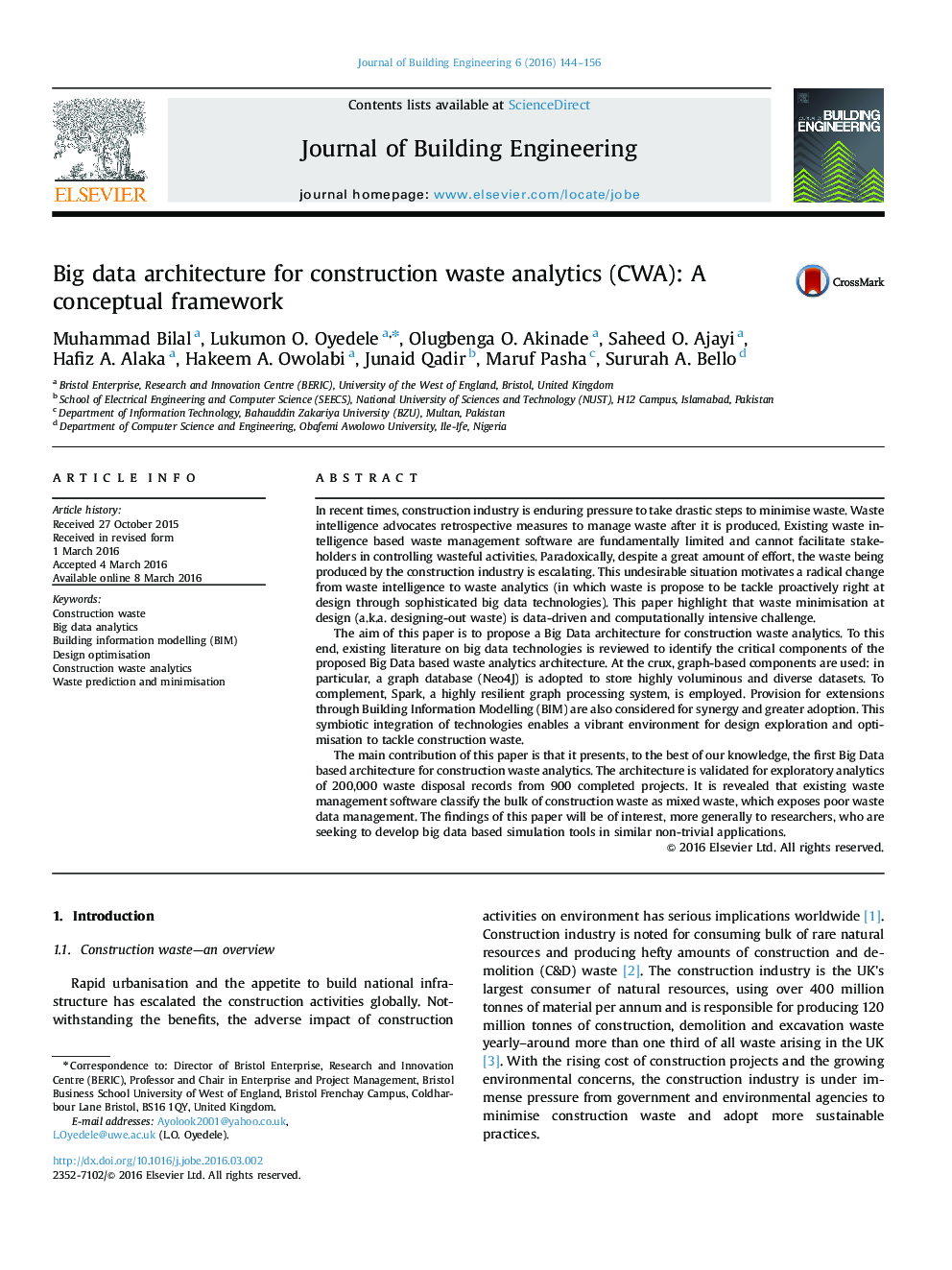| کد مقاله | کد نشریه | سال انتشار | مقاله انگلیسی | نسخه تمام متن |
|---|---|---|---|---|
| 283804 | 509116 | 2016 | 13 صفحه PDF | دانلود رایگان |
• Big Data Architecture for Waste Analytics is proposed and validated.
• Critical stages required for Waste Analytics lifecycle are identified.
• Leading Big Data platforms are evaluated.
• It is revealed that existing waste intelligence practices are unable to tackle waste.
• Waste analytics is next generation approach for construction waste management.
In recent times, construction industry is enduring pressure to take drastic steps to minimise waste. Waste intelligence advocates retrospective measures to manage waste after it is produced. Existing waste intelligence based waste management software are fundamentally limited and cannot facilitate stakeholders in controlling wasteful activities. Paradoxically, despite a great amount of effort, the waste being produced by the construction industry is escalating. This undesirable situation motivates a radical change from waste intelligence to waste analytics (in which waste is propose to be tackle proactively right at design through sophisticated big data technologies). This paper highlight that waste minimisation at design (a.k.a. designing-out waste) is data-driven and computationally intensive challenge.The aim of this paper is to propose a Big Data architecture for construction waste analytics. To this end, existing literature on big data technologies is reviewed to identify the critical components of the proposed Big Data based waste analytics architecture. At the crux, graph-based components are used: in particular, a graph database (Neo4J) is adopted to store highly voluminous and diverse datasets. To complement, Spark, a highly resilient graph processing system, is employed. Provision for extensions through Building Information Modelling (BIM) are also considered for synergy and greater adoption. This symbiotic integration of technologies enables a vibrant environment for design exploration and optimisation to tackle construction waste.The main contribution of this paper is that it presents, to the best of our knowledge, the first Big Data based architecture for construction waste analytics. The architecture is validated for exploratory analytics of 200,000 waste disposal records from 900 completed projects. It is revealed that existing waste management software classify the bulk of construction waste as mixed waste, which exposes poor waste data management. The findings of this paper will be of interest, more generally to researchers, who are seeking to develop big data based simulation tools in similar non-trivial applications.
Journal: Journal of Building Engineering - Volume 6, June 2016, Pages 144–156
